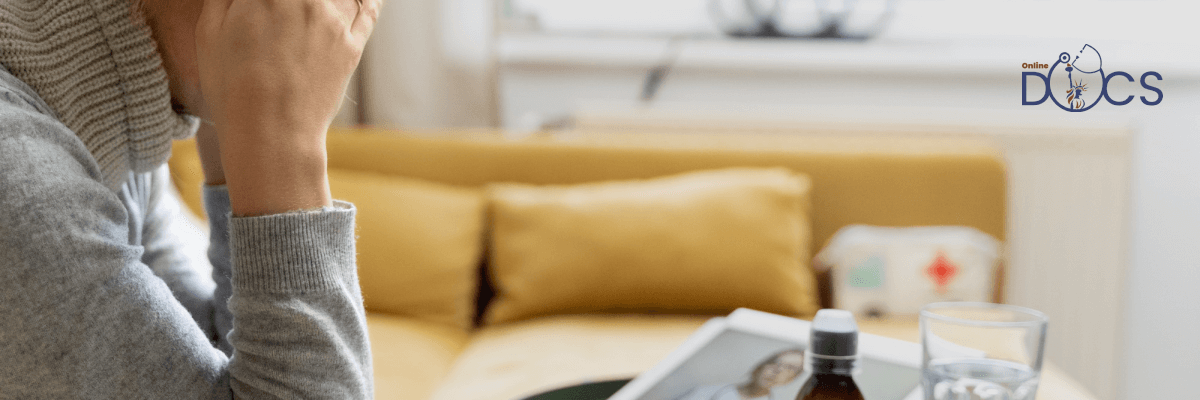Many people with mental health issues also suffer from substance abuse, and vice versa. This is known as "dual diagnosis" or "co-occurring disorders." It is estimated that more than 20% of people who have a mental illness also have a substance use disorder. The reason for this high rate of dual diagnosis is not entirely apparent, but it's thought to be connected to genetics, environment, and other factors.
A person who has both mental health issues and substance abuse problems will likely need specialized treatment approaches to address their needs effectively. Here's what you need to know about dual diagnosis:
What Is Dual Diagnosis?
A dual diagnosis is when someone has a substance abuse problem and a mental health disorder at the same time. It's important to know that this isn't the same as having two separate issues. Instead, they are related by the fact that they both involve emotional distress and behavioral problems.
Mental health disorders include anxiety, depression, bipolar disorder (manic depression), schizophrenia, and more. Some people may also have more than one condition at once--for example, someone who suffers from both bipolar disorder and alcoholism. These conditions create difficulties in everyday life that make it hard for them to function well without help from others or support systems like treatment programs explicitly designed for dual-diagnosis patients.
The Problem with Dual Diagnosis
Oftentimes, the client may have a substance abuse problem and also a mental health disorder. In other cases, the client may have a mental health disorder without any drug or alcohol issues. This can be challenging because it's more difficult to treat both problems at once--and even more so when you don't know which came first.
In addition to those situations where both problems exist simultaneously in one person (dual diagnosis), there are also those cases where one condition leads directly into another: For example, someone who has been abusing drugs for years might develop an anxiety disorder after being arrested for possession of illegal substances; this could then lead him down an even darker path toward depression or suicide ideation if left untreated by professionals who specialize in treating dual disorders.
Who Is Affected by Dual Diagnosis?
Dual diagnosis is a complex issue, but the first step in overcoming it is understanding who is most at risk of developing both conditions.
As with any mental health condition, those who have a family history of substance abuse or addiction are more likely to be affected by dual diagnosis. For example, if your mother struggles with alcohol or drugs and you feel that her behavior has had an impact on your own life (or vice versa), then it may be more difficult for you to abstain from these substances.
However, even if this does not apply directly to you or someone close to you personally--and even if no one else in your family has struggled with substance abuse before--you still might find yourself struggling with dual diagnoses at some point in life due to other factors like genetics or environment exposure during childhood years.
Why Does Substance Abuse Occur Alongside Mental Health Issues?
The reasons for this overlap are complex. Mental illness can cause people to feel depressed, anxious, or stressed. It may also make it difficult for them to cope with stress or anxiety. People with mental illness may turn to drugs or alcohol as a way of self-medicating their symptoms--and vice versa: Drug use can worsen existing conditions like depression and anxiety disorders.
Finally, some drugs (such as opioids) have effects that mimic those of certain psychiatric medications used to treat mental health problems such as severe depression or bipolar disorder; this means that people who take these medications might be more likely than others not taking them--or even those who do not have any diagnosed disorder at all--to develop substance abuse problems later on down the road if they begin using illegal substances regularly enough over time.
What Are the Challenges of Working With a Dual Diagnosis Client?
When working with a dual-diagnosis client, it's essential to be aware of some of the challenges that come with treating both mental health and substance abuse issues in the same person. Your client may not understand the treatment plan or be able to follow through with it, which can make it difficult for you as a therapist or counselor. The client might also lack motivation and focus on their recovery process because they don't know where to start or what steps they need to take next.
How to Manage a Case with a Client with Both Substance Abuse and Mental Health Issues
When working with clients who have both mental health and substance abuse issues, it's important to remember that each client's case is unique. You should use a comprehensive assessment to identify the individual needs of each person. Then, create a treatment plan based on the results of your assessment and any other information you may have about the client.
In addition to using these tools in your daily practice as a therapist (or other professional), there are other things you can do as well:
- Work with your client's primary care provider(s). Your clients will likely see their primary care providers more often than they see you--and those visits could provide vital information about their mental health or substance abuse history that could be useful when developing plans for treatment.
- Use case management software in order to keep track of all aspects related to each patient's care.
- Utilize peer support groups within or outside our facility if appropriate for this particular situation.
- Consider family involvement whenever possible; we often find family members play an important role when trying to help loved ones overcome addiction problems.
- Refer clients who need dual diagnosis treatment programs if necessary because these specialized programs offer extra services specifically designed for people suffering from both conditions simultaneously!
People with mental health disorders are at higher risk of developing a substance use problem than those without.
People with mental health disorders are at higher risk of developing a substance use problem than those without. The link between mental health and substance abuse is complicated, however, and not always clear-cut. Some people with mental illness may be more inclined to use drugs or alcohol as a coping mechanism; others may begin using substances because they believe they'll help their symptoms (which is false).
There are also some medications used to treat certain psychiatric conditions that can cause cravings for drugs or alcohol--this can be especially true for antidepressants like SSRIs (selective serotonin reuptake inhibitors).
Someone who is addicted to drugs or alcohol can also have other psychiatric conditions like ADHD, anxiety, or depression.
It's not uncommon to suffer from both mental health and substance abuse issues. In fact, someone who is addicted to drugs or alcohol can also have other psychiatric conditions like ADHD (attention-deficit/hyperactivity disorder), anxiety, or depression.
It can be difficult for people with dual diagnosis because they may feel that their mental health condition makes them less deserving of help or treatment for their addiction.
For example, A person with ADHD who uses drugs might think they don't deserve treatment because they "already have enough problems." Or someone with depression may use drugs as an escape from the pain they feel inside--but then struggle with guilt over their actions later on because they know it isn't good for them, either physically or emotionally.
Substance abuse and mental health issues often go hand in hand because they both have similar symptoms.
People with mental health issues are more likely to develop substance abuse problems, and vice versa. A person with bipolar disorder may be more likely to self-medicate with alcohol or drugs, while someone struggling with anxiety or depression might turn to substances in order to feel better. In either case, it's essential that you get help for both your mental health condition and your substance abuse problem at the same time--if not sooner!
If you have been diagnosed with a dual diagnosis (a combination of two illnesses), then there are some things we need to address right out of the gate:
- Don't wait until one problem gets worse before seeking treatment for another one; this will only make matters worse overall. You should always seek treatment as soon as possible if either condition begins impacting your life negatively enough that it affects other areas like work performance or relationships at home/school/workplace, etcetera.
- Make sure doctors know about any medications currently prescribed so they don't prescribe something else that interacts negatively with those medications.
We hope this article has helped you better understand what dual diagnosis is, how to spot it, and what treatments are available. If you're concerned about yourself or a loved one, please reach out for help. When you decide to seek out help, you are prioritizing your mental well-being above everything else, and we would like to make your journey a little easier. At Online Docs, we will guide you through every step and help you access world-class mental health therapy. Our excellent team of psychiatrists and therapists at Online Docs are well equipped to help you get better with the treatment that is best suited for you. There are also many resources available, including hotlines staffed by trained counselors who can talk through any concerns or issues that may arise during treatment.



.png)



.jpg)